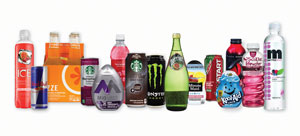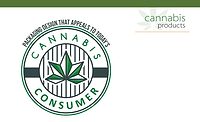
|
| Beverage packaging that resonates with consumers’ desire for healthy alternatives to soda helped brands such as MiO and Starbucks gain market share. Source: Affinnova. |
Affinnova analyzed the packaging of brands in the water enhancer, energy drink, flavored sparkling water, flavored-enhanced water and sparkling fruit juice categories. The designs were measured on their ability to grab and hold consumers’ attention, strengthen consumer brand perceptions and increase purchases.
“A number of studies have pointed to the fact that traditional marketing levers like advertising are having less of an impact on influencing consumer purchasing and determining a brand’s market share,” explains Mike Black, vice president, marketing and communications at Affinnova. “Our hypothesis was the package design might be playing a stronger role because it can drive trial and capture consumer interest right at shelf, at the moment of purchase. The theory proved true. In looking at a number of beverage categories, we found the brands with the most advertising and best distribution weren’t the ones gaining market share; the brands gaining share were the ones with the strongest package designs.”
Affinnova used its Design Audit technology, an online survey technology that uses consumer feedback to help brands assess the strengths and weaknesses of their package designs compared to those of competitors. The technology also uses a web-cam eye tracking feature to measure each design’s ability to stand out to consumers.
In the energy drinks category, NOS and AMP have struggled to gain share against Red Bull and Monster, despite the distribution and advertising muscle of their parent companies, Coca-Cola and Pepsi. Affinnova’s study suggests that the inferior package designs of NOS and AMP are primarily to blame: They fail to attract consumers’ attention or drive purchases at the shelf. In particular, NOS and AMP performed poorly on package design personality, meaning consumers didn’t associate their packaging with any strong brand characteristics. However, in the sparkling water category, recent entrant Sparkling ICE used effective package design to overcome limited distribution and advertising support, beating out long-established category leaders such as Perrier.
Minute Maid is an example of a brand that has used package design to gain share on a major category leader—in this case, MiO liquid water enhancer. MiO was the first brand in the category, but Coca-Cola’s Minute Maid offering closed the gap by building brand awareness through exceptional package design.
Starbucks also shows how package design can help a brand take share from current market leaders. Red Bull and Monster lead the energy drink category in revenue, but Starbucks’ Double Shot and Refreshers brands have gained ground by using package designs to attract consumers who seek softer, less macho brand qualities. Starbucks’ package designs evoke feelings of health and safety, and are more appealing to women. v
For more information: Mike Black, 781-464-4763, mblack@affinnova.com, www.affinnova.com



